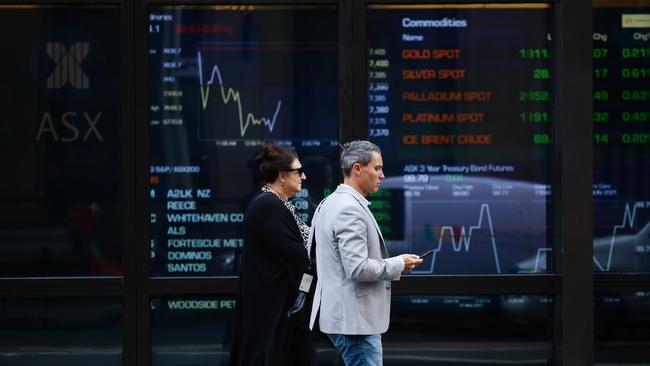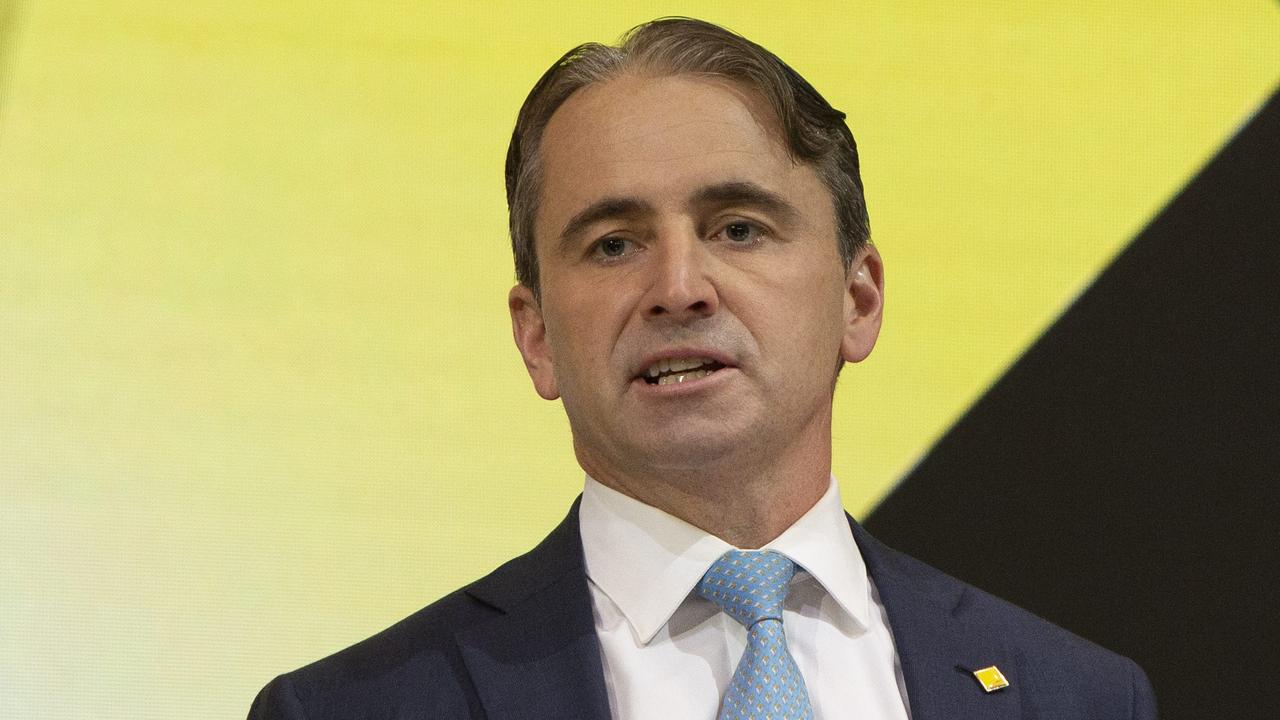New generation of investors share spoils of 2021
Bargain hunting paid off again for a fresh wave of sharemarket investors who swarmed the ASX in 2021.

Business
Don't miss out on the headlines from Business. Followed categories will be added to My News.
Lockdown fever triggered another bumper year of share market trading among local investors in 2021 as they chased travel stock bargains, buy now, pay later opportunities and just about any entry point to the electric car boom.
After the pandemic created new uncertainty across the economy mid-year, Australian share investors now look like finishing calendar 2021 in the box seat as the ASX 200 is heading towards rewarding investors with a 12 per cent increase for the last 12 months. In 2020, the return was a miserly minus 1.4 per cent.
Trading volumes have soared since the crash of February 2020: At nabtrade, volumes tripled since the depths of the downturn while the number of new accounts is up by 500 per cent. At CommSec, the nation’s biggest broker says it is experiencing a record level of activity with over 1 million new accounts opened since February 2020 and two thirds of those new clients are Millennials.
“Buying the dips’ again dominated as the key theme over the last year as those who bargain hunted successfully in mid-2020 did something very similar in 2021, but this time focusing on travel stocks such as Flight Centre (up 30 per cent in 12 months) and QANTAS (unchanged).
Investors also rushed the BNPL sector as Afterpay soared in time for a lucrative takeover from US-based Block and arch rival Zip Co was heavily traded too.
Across the leading share market platforms investors played every angle on the move towards electric cars with little known lithium miners such as Novonix, Pilbara Metals and Vulcan Energy among the most traded stocks of the year. Shareholders made serious money in the EV space- On the ASX, Pilbara Metals is up 231 per cent, while on NASDAQ Tesla is up around 60 per cent over the last year.
Importantly, investor trading patterns revealed new ambitions among Australian investors – such as buying offshore stocks and accumulating index-linked Exchange Traded Funds.
Several leading brokers have been keen to point out that despite the recent ‘‘meme’’ frenzy among younger investors in the US, Australia’s younger investors are actually quite conservative. Among local brokers: Older investors generally operate larger share portfolios (more than ten stocks) – and they trade far more often.
Younger investors are particularly keen on EV stocks early in the electric car boom: At Superhero, three of the top five most traded offshore stocks were EV plays: Tesla, Lucid Motors and Rivian.
Remarkably, even at a major established broker such as nabtrade, Elon Musk’s EV empire ranks as the 11th most traded stock overall among onshore and offshore stocks.
The trading action on the sharemarket was most obvious in trading volumes (this is an indicator of the sheer number of shares traded as opposed to the value of stocks traded): The increase in volumes may reflect the dominance of stocks which had relatively low share prices in dollar terms. For example Zip Co – one of the most heavily traded shares of the year- has a share price of just $4.90 against almost $100 at CBA.
One leading stock that managed to stand out in terms of trading activity was the $57 billion iron ore major Fortescue: The company may be undergoing a fundamental shift towards renewable energy but investors rushed the stock as the iron ore commodity price remained volatile. Iron ore prices started the year at less than US$100 a tonne, broke US$200 a tonne in June and are now trading near US$100 a tonne again. No wonder Fortescue attracted investors of every age and category making the top five of most broker’s most traded lists.
As you might expect at newer brokers such as Superhero, there is an emphasis on new sharemarket favourites such as the BNPL brigade and EV stocks. Still, chief executive John Winters says clients at the brokerage show very similar patterns to the wider investment community actively bargain hunting when there is a pullback: “Buying the dip is definitely the key theme this year, whether that will extend into 2022 I just don’t know’.” he suggests.
Winters also says that younger investors are just as likely to buy an Exchange Traded Fund as a single stock – the most popular ETF among his database is the Betashares NASDAQ ETF.
Gemma Dale, NAB’s director of investor behaviour, echoes Winters: “We have found that the older the customer, the less the allocation is to passive investing such as index funds: In contrast we are finding that younger investors have up to one third of their holdings in ETFs.”
Despite the high trading volumes of some stocks their fortunes can vary widely: Similarly certain segments of the market might have done very well over the year even though individual stocks from the sector did not make top ten lists.
“It’s been a great year for trading volumes and new accounts,” says Ryan Felsman, senior economist at CommSec. “And it’s also worth getting behind the figures and looking at sector performance over the last 12 months. Because, when you look at how sectors are going you can see it was a very good year for telecommunications, consumer discretionary companies and real estate.
“On the other hand it‘s been tough for IT stocks and some growth players. But this is not always obvious from watching the most traded stocks – Afterpay, for example, is among the most heavily traded stocks of the year and it had a great spell. But for the last 12 months it is actually down (by 14 per cent),” Felsman says.
Originally published as New generation of investors share spoils of 2021



